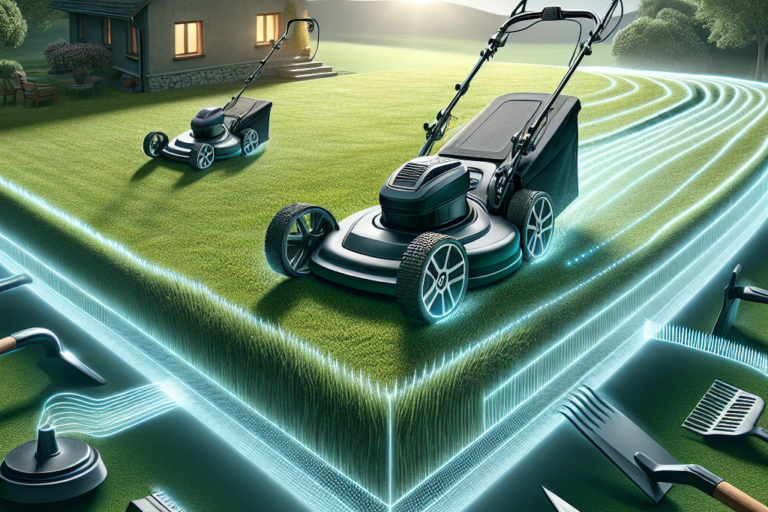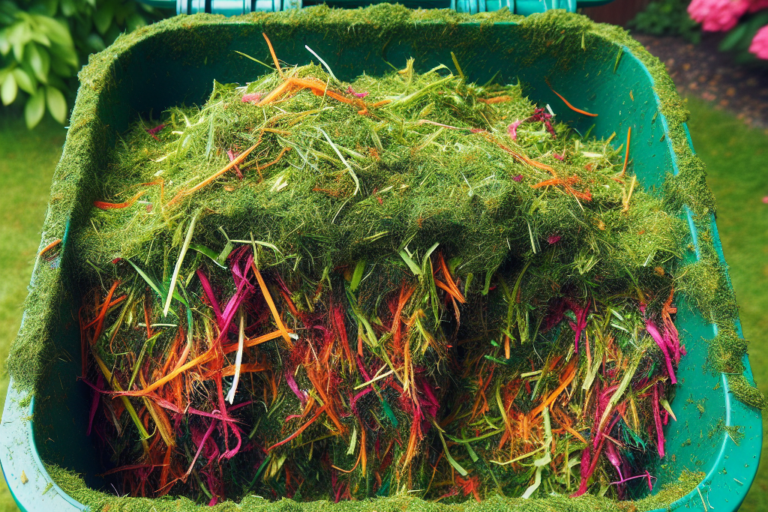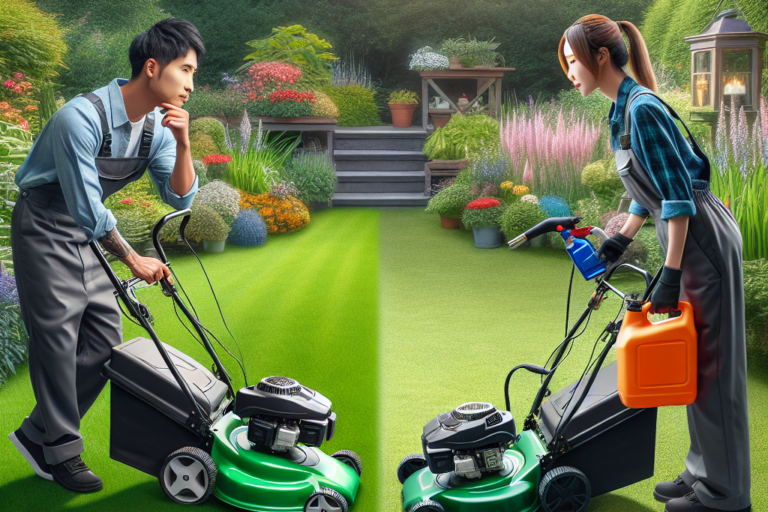Imagine having a lush, green lawn that beckons you to sit and relax, but it’s getting increasingly harder to manage because of the thick, heavy grass. That’s where electric mowers come to the rescue. With their advanced technology and powerful motors, electric mowers effortlessly glide over even the most challenging terrain, making light work of the toughest grass. From their sharp blades to their intuitive cutting settings, these mowers are specifically designed to handle the demands of thick, heavy grass, ensuring that your lawn remains pristine and inviting all year round. Say goodbye to the hassle of grappling with unruly grass and embrace the efficiency and ease of electric mowers.
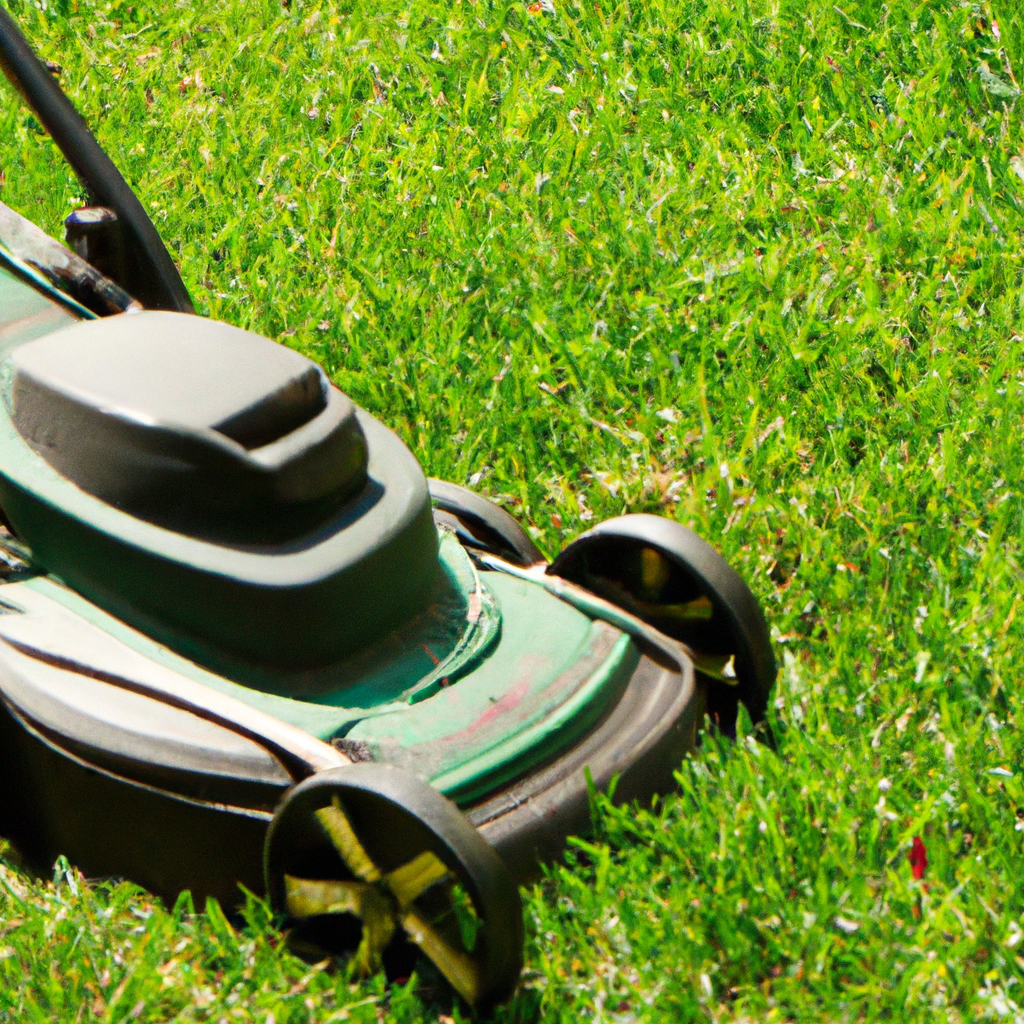
Factors to Consider
When it comes to choosing an electric mower, there are several factors you should consider to ensure you find the right one for your needs. From power and engine strength to maintenance requirements, each aspect plays a crucial role in determining the performance and efficiency of the mower. Let’s delve into each factor in detail to help you make an informed decision.
Power and Engine Strength
One of the primary considerations when choosing an electric mower is its power and engine strength. This factor directly impacts the mower’s ability to cut through thick and heavy grass with ease. There are two different types of power sources to consider: motor power or battery power.
The motor power is measured in horsepower (HP) and determines how much energy the motor can generate. A higher horsepower generally indicates a more potent motor, capable of tackling denser grass. On the other hand, battery-powered mowers rely on the strength and performance of their batteries to provide the necessary power. Look for mowers with high-capacity batteries for longer runtime and sufficient power output.
Brushless motors are another crucial feature to consider. These motors are more efficient, quieter, and offer a longer lifespan compared to traditional brushed motors. They also provide consistent power output, ensuring a smooth and efficient cutting experience.
Torque is another essential factor to consider, as it determines the mower’s ability to maintain consistent blade speed and handle challenging grass conditions. Look for mowers with high torque ratings for better overall performance.
Max RPM (Rotations Per Minute) is another critical specification to consider. A higher RPM allows the blades to rotate faster, resulting in cleaner and more precise cuts. However, it’s important to ensure that the mower’s RPM doesn’t compromise the quality of the cut.
To protect the motor and prevent overheating, it’s beneficial to choose a mower with overload protection. This feature automatically shuts off the motor if it becomes overloaded, preventing any potential damage and prolonging the mower’s lifespan.
Cutting Width and Height
The cutting width and height are crucial specifications to consider when choosing an electric mower. The cutting width refers to how wide the mower’s deck can cut with each pass. A wider cutting width means you can cover more ground in less time, making it ideal for larger lawns. However, keep in mind that wider cutting widths may not be suitable for smaller yards with obstacles.
Adjustable cutting heights are another important feature to look for. Different grass types and seasons may require different cutting heights to achieve optimal results. Being able to adjust the cutting height allows you to customize your lawn’s appearance and maintain its health. Look for mowers that offer a wide range of cutting height options to meet your specific needs.
If you have particularly thick or overgrown grass, consider mowers with larger cutting gaps. These gaps provide more space for the grass to pass through, preventing clogging and ensuring a cleaner cut. In some cases, you may need to make multiple passes to achieve the desired results, especially when dealing with dense or tall grass.
Blade Type
The blade type of an electric mower directly impacts its cutting efficiency and effectiveness. There are three main types of blades you can consider: high-lift blades, mulching blades, and extra durable blades.
High-lift blades are designed to create a strong upward airflow, allowing them to lift the grass blades before cutting. This feature facilitates better airflow, resulting in improved grass lift and discharge. High-lift blades are ideal for mowing longer grass or for use in conjunction with grass collection bags.
Mulching blades, on the other hand, are specifically designed for mulching functionality. These blades have a unique design that chops the grass into fine clippings, which are then dispersed back into the lawn. Mulching promotes healthier grass growth by acting as a natural fertilizer. Look for mowers that come with mulching capabilities or a mulching plug or attachment for added convenience.
Extra durable blades are designed to withstand tougher conditions, such as thick or heavy grass. These blades are often made from high-quality materials that offer enhanced strength and longevity. If you anticipate mowing challenging or uneven terrains, consider opting for a mower with extra durable blades to ensure long-lasting performance.
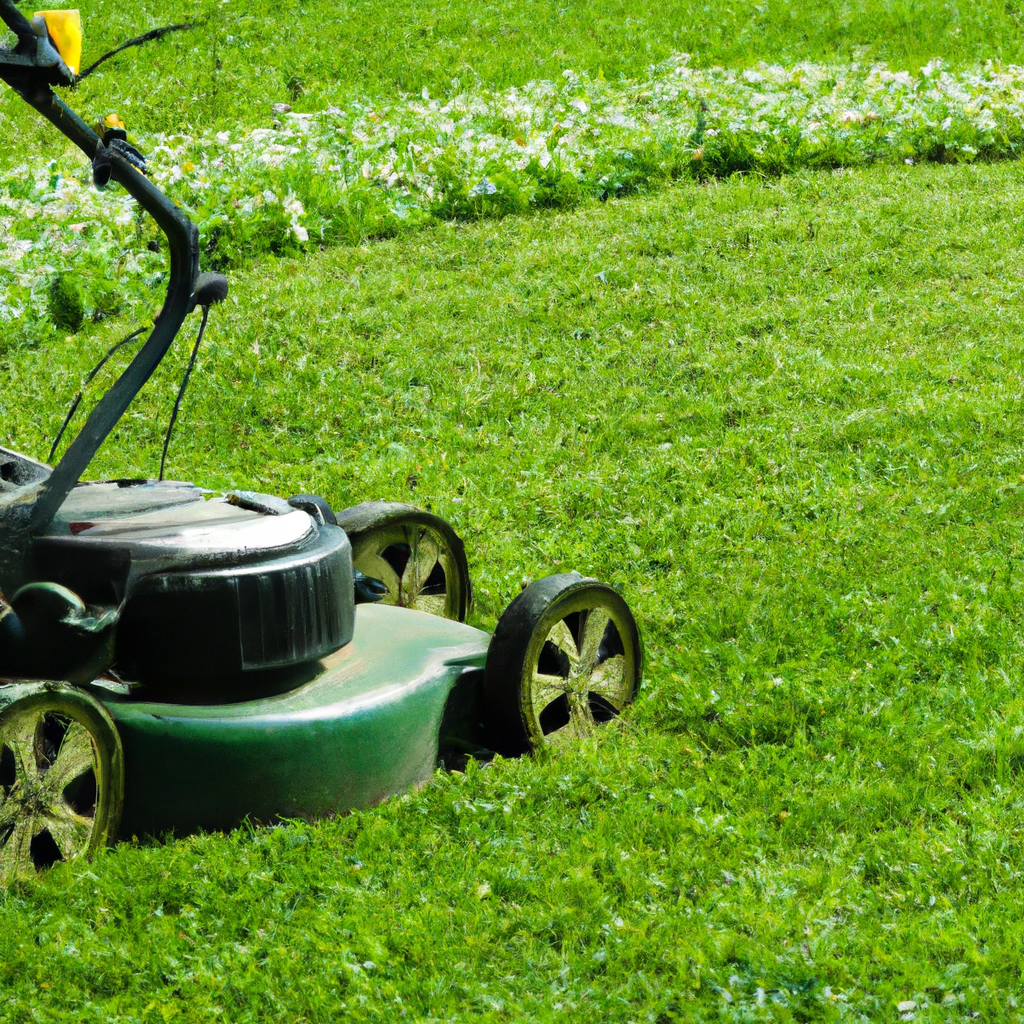
Mulching Capabilities
Mulching functionality is a valuable feature to consider when choosing an electric mower. Mulching involves cutting the grass into fine clippings, which are then dispersed back into the lawn. This process provides natural fertilization, promotes healthier grass growth, and reduces the need for external fertilizers.
When considering mulching capabilities, it’s important to assess the quality of the mulch produced. Look for mowers that are specifically designed to create finely chopped clippings for effective mulching. The quality of the mulch significantly impacts its ability to break down quickly and provide essential nutrients to the soil.
Some mowers come with a built-in mulching plug or attachment, which allows you to switch between regular mowing and mulching with ease. This feature provides versatility and convenience, ensuring you can adapt your mowing approach based on the condition of your lawn.
Deck Material
The deck material of an electric mower plays a crucial role in its durability and overall performance. There are three common deck material options to consider: steel, aluminum, and plastic.
Steel decks are widely regarded for their sturdiness and resilience. They can withstand rough terrains, impacts, and accidental collisions with obstacles without sustaining significant damage. Steel decks are ideal for homeowners who prioritize durability and longevity.
Aluminum decks offer a lightweight alternative without compromising on strength. They are resistant to rust and corrosion, making them suitable for humid or coastal areas. Aluminum decks are also easier to maneuver and handle, making the mower more user-friendly.
Plastic decks are generally the lightest and most affordable option. They offer adequate durability for regular lawn mowing, but they may not be as strong as steel or aluminum decks. Plastic decks are ideal for homeowners with smaller lawns or those who prioritize lightweight and budget-friendly options.
It’s important to note that the overall performance of the mower is not solely determined by the deck material. Other factors, such as blade quality and motor power, also play significant roles in the mower’s cutting ability.
Weight and Maneuverability
The weight and maneuverability of an electric mower are essential considerations, especially if you have a lawn with challenging terrain or obstacles. Lightweight designs are easier to handle and maneuver, reducing fatigue and strain on the user.
Consider the size and layout of your lawn to determine the ideal weight and maneuverability required. Rear-wheel-drive or self-propelled mowers are particularly helpful for sloped or hilly terrains, as they offer better traction and ease of maneuverability.
If you have a smaller, flat lawn, a lighter and more maneuverable mower may be sufficient. However, if you have a larger lawn or anticipate mowing uphill, a self-propelled or rear-wheel-drive mower may be a better choice.
Grass Discharge Options
When mowing your lawn, you have three main options for grass discharge: side discharge, rear discharge, and bag collection.
Side discharge mowers expel the grass clippings to the side of the mower as you mow. This option is ideal for larger lawns or areas where you don’t mind the clippings being thrown to the side. Side discharge mowers are efficient for high volume and can cover more ground in less time.
Rear discharge mowers, as the name suggests, release the grass clippings out of the rear of the mower. This option is beneficial if you prefer a cleaner and more uniform appearance after mowing. Rear discharge mowers are also useful for mowing near landscaping features or flower beds, as they prevent grass clippings from being thrown onto these areas.
Bag collection mowers, on the other hand, collect the grass clippings in a bag attached to the mower. This option is ideal if you want a clean and manicured lawn with no visible clippings left behind. Bag collection mowers are also convenient for disposing of the clippings easily.
Consider the specific needs of your lawn and your personal preferences when deciding on the ideal grass discharge option for your electric mower.
Battery Life and Runtime
If you opt for a battery-powered electric mower, it’s essential to consider the battery life and runtime. Battery capacity determines how long the mower can operate on a single charge. Look for mowers with high-capacity batteries to ensure longer runtime and uninterrupted mowing sessions.
Pay attention to the advertised runtime on a single charge, as this can vary depending on the mower’s power and operating conditions. If you have a larger lawn or anticipate longer mowing sessions, it’s beneficial to choose a mower with a longer runtime to avoid frequent charging interruptions.
Additionally, consider the charge time required to fully charge the battery. Shorter charge times allow for quicker turnaround between mowing sessions, ensuring your lawn always looks its best.
It’s worth noting that some electric mowers may have the ability to handle continuous use, allowing you to swap batteries for uninterrupted mowing. If you have a particularly large lawn or anticipate longer periods of mowing, this feature may be a valuable asset to consider.
Safety Features
Safety should always be a top priority when operating any type of mower, including electric mowers. Look for mowers that come equipped with various safety features to ensure a secure and accident-free mowing experience.
One essential safety feature to consider is a blade brake system. This feature stops the blade from rotating once the mower handle is released, reducing the risk of accidental cuts or injuries. Additionally, some mowers may have a safety key or button that needs to be engaged for the mower to start, preventing unauthorized use or accidental startups.
Other safety features to lookout for include adjustable handle heights to ensure proper ergonomics, sturdy wheel locks to prevent unintended movement, and a clear and understandable instruction manual for proper use and maintenance.
Maintenance Requirements
Maintaining your electric mower properly ensures its longevity and optimal performance. Here are some key maintenance requirements to consider:
Blade sharpening is an essential maintenance task as dull blades can result in an uneven or ragged cut. It’s recommended to sharpen the blades at least once a season or whenever you notice a decrease in cutting efficiency. It’s important to follow the manufacturer’s guidelines to ensure proper sharpening techniques and blade balance.
Cleaning and debris removal are necessary after each mowing session. Grass clippings and debris can accumulate in the mower’s deck and hinder its performance. Removing obstructions and cleaning the mower regularly will prevent clogs and ensure optimal airflow.
Air filter cleaning or replacement is crucial for maintaining the mower’s engine performance. Check the manufacturer’s recommendations for cleaning intervals and follow the instructions provided.
Battery maintenance is important for battery-powered electric mowers. Follow the manufacturer’s guidelines for proper charging, storage, and maintenance practices to ensure the battery’s longevity and performance.
By properly maintaining your electric mower, you can ensure it operates at its best and enjoys a longer lifespan.
In conclusion, when selecting an electric mower, consider factors such as power and engine strength, cutting width and height, blade type, mulching capabilities, deck material, weight and maneuverability, grass discharge options, battery life and runtime, safety features, and maintenance requirements. By thoroughly evaluating these factors, you can confidently choose an electric mower that suits your specific lawn care needs and preferences. Happy mowing!




